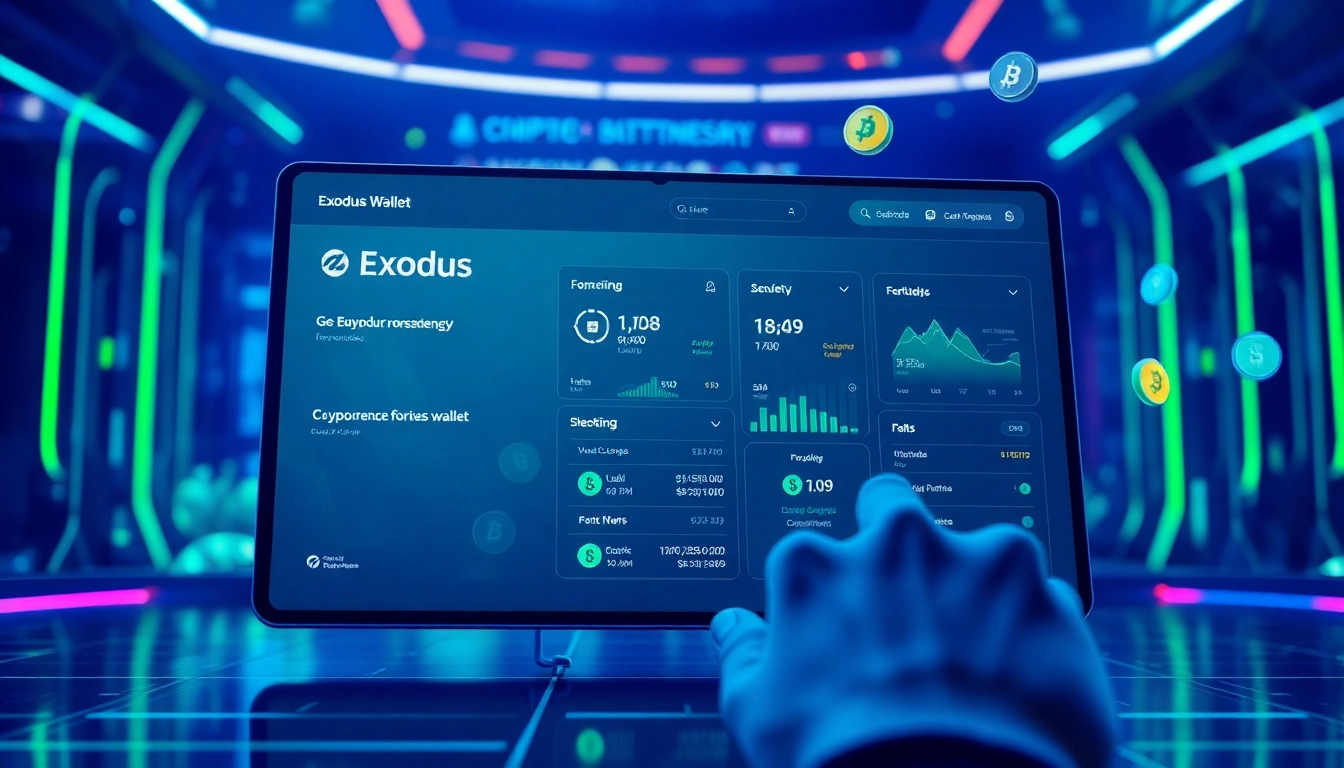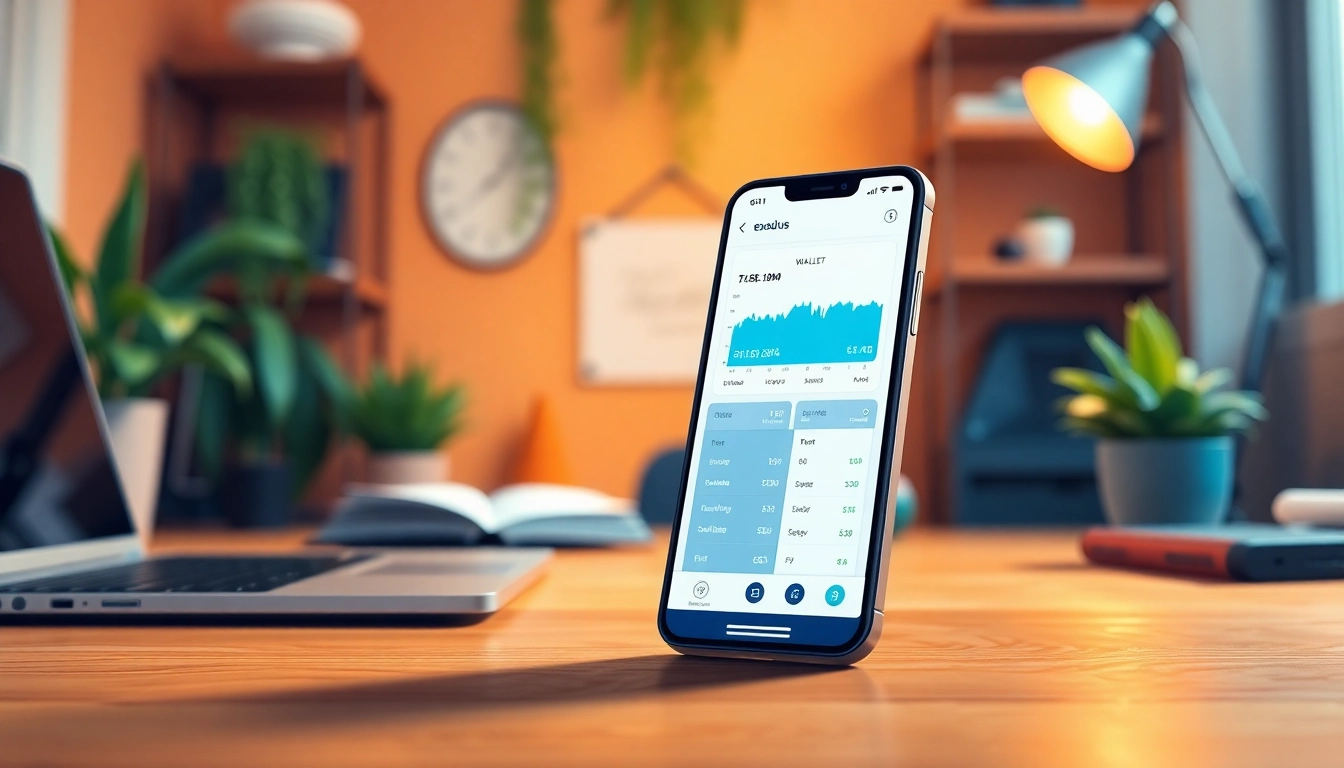Understanding the Exodus Wallet: Features and Benefits
What is the Exodus Wallet?
The exodus wallet serves as a versatile software wallet for storing, managing, and exchanging various cryptocurrencies. Launched in 2016, Exodus has quickly gained recognition for its attractive design and user-friendly interface, which make it accessible to both beginners and seasoned users. This wallet enables users to control their private keys, facilitating safe and direct access to their digital assets.
Exodus supports a wide range of cryptocurrencies, allowing users to manage over 100 cryptocurrencies and digital assets all in one platform. Its non-custodial nature means that users are in complete control of their funds, making it a desirable choice among cryptocurrency enthusiasts globally.
Key Features of the Exodus Wallet
- User-Friendly Interface: Exodus offers an intuitive design that simplifies the complexities of cryptocurrency management.
- Multi-Currency Support: The wallet supports over 100 different digital currencies, making it versatile for users with diverse portfolios.
- Built-In Exchange: Users can conveniently exchange cryptocurrencies within the application without visiting external exchanges, thus streamlining the process.
- Secure Backup: Exodus provides robust backup options, including recovery phrases enabling users to restore their wallet securely.
- Portfolio Tracking: Users can track real-time portfolio performance and activity through an in-app portfolio tracker, offering insights into market trends.
Benefits of Using Exodus Wallet for Cryptocurrency Transactions
Utilizing the Exodus wallet offers multiple advantages for cryptocurrency transaction management:
- Accessibility: With mobile and desktop versions available, users can access their wallet from various devices at any time.
- Enhanced Security: The wallet offers private keys stored locally on the user’s device, ensuring that funds are safeguarded against potential hacks.
- Continuous Improvement: Exodus consistently updates its software, incorporating user feedback to enhance functionalities and maintain secure operations.
- Educational Resources: The platform provides a wealth of resources, enabling users to educate themselves about cryptocurrency and trading.
Getting Started with the Exodus Wallet
How to Download and Install the Exodus Wallet
Getting started with the Exodus wallet begins with downloading and installing the application. Follow these steps:
- Visit the official Exodus website or the app store applicable to your operating system (Windows, macOS, Linux, iOS, or Android).
- Download the latest version of the wallet compatible with your device.
- Once the download is complete, open the installation file and follow the on-screen instructions to complete the installation process.
Ensure that you are downloading the wallet from the official source to avoid security risks associated with counterfeit applications.
Creating Your First Wallet with Exodus
After installation, creating your first wallet is straightforward:
- Open the application and select “Create a new wallet.”
- The wallet will prompt you to write down a recovery phrase. This is crucial; it will allow you to recover your wallet if needed, so store it in a safe place.
- Once you have securely documented the recovery phrase, proceed to set a strong password to secure your wallet further.
Your wallet is now set up and ready for transactions.
Understanding Wallet Security Settings
Security is paramount in cryptocurrency management. The Exodus wallet includes various security settings designed to protect user funds:
- Emphasize the importance of using a strong password and never sharing it.
- Regularly update your wallet to the latest version to benefit from security patches and improvements.
- Enable two-factor authentication if available to add an additional layer of protection.
Managing Your Digital Assets in the Exodus Wallet
How to Send and Receive Cryptocurrency Using Exodus Wallet
Sending and receiving cryptocurrencies is user-friendly on Exodus:
- To receive funds, navigate to the “Wallet” tab, select the cryptocurrency you wish to receive, and click on “Receive.” A QR code and wallet address will be displayed.
- To send cryptocurrency, select the relevant currency, click on “Send,” input the recipient’s address, enter the amount and confirm the transaction.
Transactions typically confirm within a few minutes, depending on the cryptocurrency and network traffic.
Steps to Swap Cryptocurrencies Within Exodus
Swapping cryptocurrencies is a standout feature of the Exodus wallet:
- Navigate to the “Exchange” tab within the wallet interface.
- Select the cryptocurrency you wish to swap and the cryptocurrency you want in return.
- Input the amount you wish to exchange and click on “Swap.” Follow the prompts to complete the process. The swapped coins will appear in your wallet shortly thereafter.
This built-in feature reduces the need for external exchanges, providing a seamless experience.
Tracking Your Portfolio Performance
Keeping tabs on your investment performance is straightforward:
Within the wallet, the “Portfolio” tab gives users a comprehensive overview of their digital assets’ performance, including market trends, value changes, and total holdings in real-time. This information is vital for making informed decisions about trading and managing your investments effectively.
Exodus Wallet Security: Best Practices
Understanding Cold vs. Hot Storage in Exodus Wallet
Exodus uses a hot wallet model, meaning that it is connected to the internet. While convenient, it’s essential to understand the risks:
- Hot Wallet: Easy access and functionality but potentially vulnerable to online attacks.
- Cold Storage: Physical devices or offline solutions that offer enhanced security against online threats. Consider utilizing a hardware wallet for decreased risk if storing significant assets.
Setting Up Two-Factor Authentication in Exodus
If enabled, two-factor authentication strengthens access security:
To set up two-factor authentication, go to “Security” settings, and follow the instructions to link your mobile device. This added step prompts for a second verification when logging in or conducting transactions, adding an additional layer of security to your assets.
Common Security Concerns and How to Address Them
As with any digital wallet, users should be aware of potential security risks:
- Phishing Attacks: Always verify the URL and never click on suspicious links.
- Software Vulnerabilities: Regularly update your wallet and follow best practices for password management.
- Device Security: Ensure your device is free from malware and regularly scanned for security threats.
Future of Cryptocurrency Management with Exodus Wallet
Adapting to Evolving Crypto Trends
As the cryptocurrency landscape evolves, Exodus remains responsive to new trends:
The integration of decentralized finance (DeFi) functionalities, including staking capabilities and decentralized exchanges, demonstrates Exodus’ commitment to adapting and enhancing user experience. As DeFi grows, users can expect new opportunities for earning passive income directly through their wallets.
Exploring Exodus Wallet’s Integration with Web3
Exodus is actively pursuing compatibility with Web3 technologies:
This includes engaging with decentralized applications (dApps) and enabling users to access various Web3 services directly from their Exodus wallet. Such integrations pave the way for a more interconnected crypto ecosystem and greater utility for users.
Innovative Features on the Horizon for Exodus Users
Exodus has a roadmap filled with innovative updates:
- Enhanced User Interface: Continuous refinement to improve user experience.
- Additional Crypto Supports: Expanding the number of supported assets.
- Advanced Security Features: Implementation of biometric authentication options.
These innovations aim to maintain Exodus’ leading position in the competitive cryptocurrency wallet space, catering to the needs of its growing user base.


